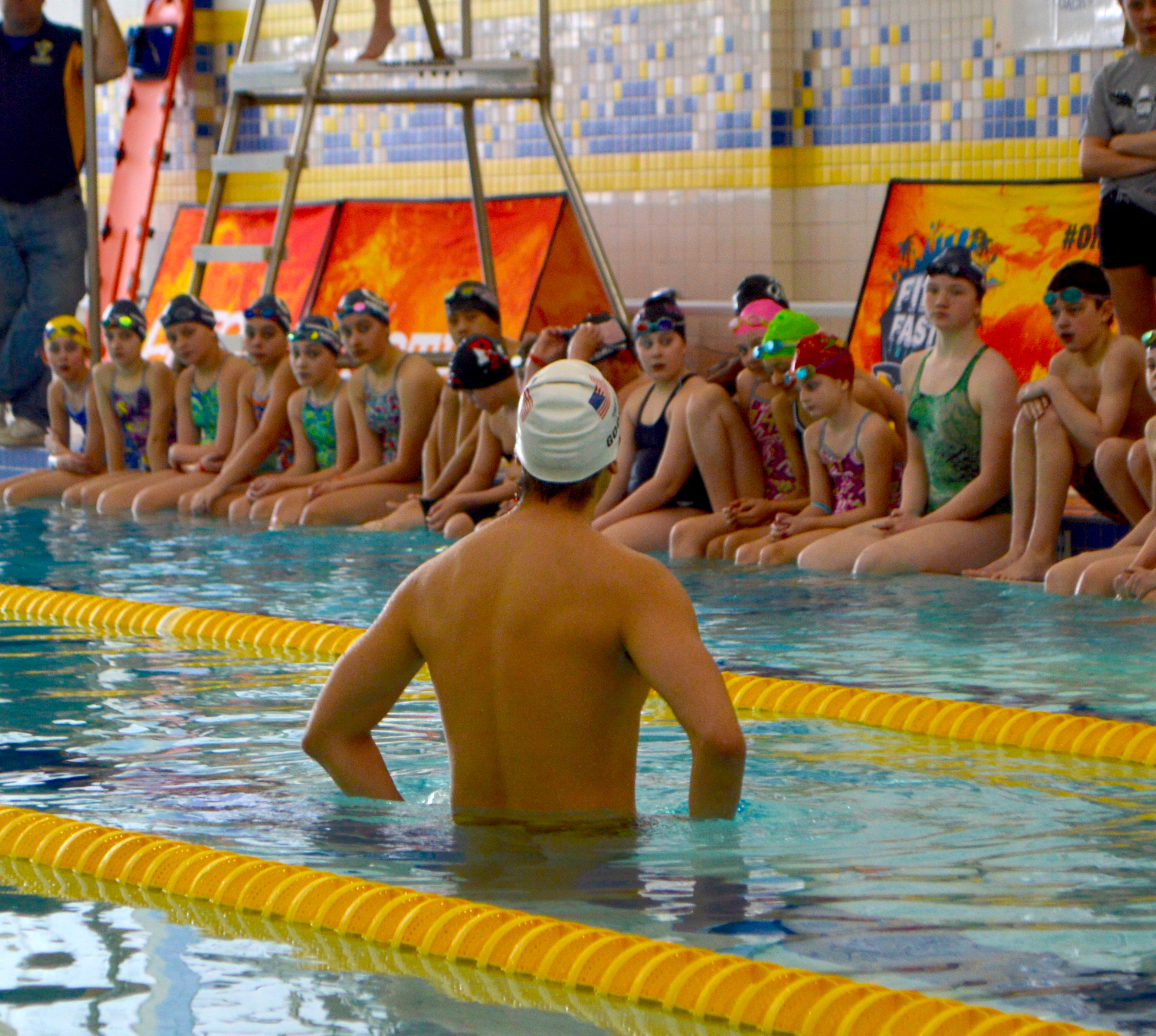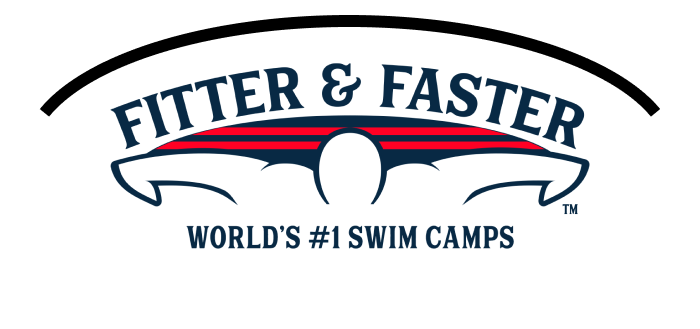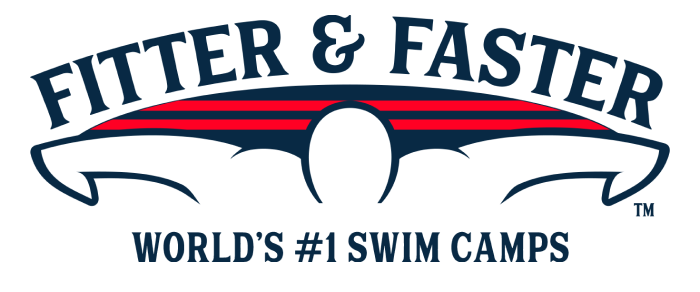Winter Swim Camp Series (Ages 13 & Over), Rockville, MD
Lakewood Country Club
13901 Glen Mill Rd,
Rockville,
MD 20850
- days
- hours
- minutes
- seconds
Introduction
Fitter & Faster is producing a series of swim camps for competitive swimmers ages 13 & Over at the Lakewood Country Club in Rockville, Maryland, in 2025 and 2026! Please see below for additional swim camps in Rockville, MD!
WINTER SWIM CAMP SERIES (Ages 13 & Over)
-> Fast Freestyle & Backstroke Technique Swim Camp (December 28 & 29, 2025)
-> Turns & Sprinting Essentials Swim Camp (February 15 & 16, 2026)
Click the “Curriculum Menu” below for details about each swim camp.
✔️ Each session has limited availability to provide a focused, high-quality learning environment.
💡 SAVE when you purchase the “Entire Camp Bundle” for your swimmer.
ADDITIONAL SWIM CAMPS IN ROCKVILLE, MD:
-> Ages 7 to 9
Select a curriculum below
FAST FREESTYLE & BACKSTROKE TECHNIQUE SWIM CAMP: December 28 & December 29, 2025
Freestyle and backstroke are referred to as “long-axis” strokes because they rely on the rotation of the hips and shoulders around the spine to generate power. This camp builds on the natural connection between the two strokes–including bodyline, flutter kick, and a high elbow catch–to enhance technical development in both. Your swimmer will also explore what makes these strokes different, unlocking some key understanding to help them swim both strokes faster and more efficiently.
- DAY 1 (Sunday, December 28): FREESTYLE TECHNIQUE: Whether your swimmer is just learning freestyle or already competing at the high school level, it’s never too late to build strong habits. In this session, your swimmer will work on bodyline, rotation, breathing, kick, and pull—five key elements that contribute to an efficient, powerful freestyle.
- Bodyline: A streamlined body position is the foundation of a fast freestyle. Even small adjustments to head, neck, or back alignment can make a significant difference. As swimmers grow and mature, they often develop habits that disrupt bodyline. Your swimmer will learn how to maintain proper posture and engage the core to stay long and hydrodynamic through every stroke.
- Breathing: Efficient breathing is a challenge but critical to maintaining bodyline. Lifting the head too high causes hips to drop and drag to increase. Clinicians will work with participants to keep the head low and horizontal during the breath, using controlled rotation of the neck and body for a smooth, quick inhale.
- Rotation: Freestyle is most powerful when the swimmer rotates around their spine with each stroke. Rotation allows swimmers to use their back and core muscles during the pull, making the stroke stronger and more sustainable. Your swimmer will learn how to glide on one side and initiate rotation as the pulling hand begins its movement.
- Kicking: The kick is the motor of freestyle. Swimmers must drive from the hips and knees with good timing and control. This session will help your swimmer understand how to adjust kick tempo and power to provide speed when they want or need it.
- Pull: Clinicians will teach participants to establish a “high elbow catch,” also known as early vertical forearm, to apply pressure to the water immediately. Swimmers will then work on pushing water directly back towards their feet with sustained leverage, engaging large muscle groups for a powerful finish to each stroke.
- DAY 2 (Monday, December 29): BACKSTROKE TECHNIQUE: While backstroke shares many concepts with freestyle, the actual skill can be much different. In this session, your swimmer will refine bodyline, rotation, kick, and pull specifically for backstroke.
- Bodyline: Backstroke bodyline should eliminate unnecessary movement. Even small amounts of bobbing or swaying create drag. Participants will learn to maintain a flat, aligned posture and engage the core to support a strong, stable position in the water.
- Rotation: Unlike freestyle, backstrokers rotate most fully onto their side when their hand is midway through the stroke. Rotation in backstroke is essential for two key reasons. First, to apply power during the pull, the swimmer’s hand must be positioned in front of the shoulder and at least a few inches below the surface of the water—something that’s only possible with proper body rotation. Second, rotation helps activate the large muscles of the back as the swimmer drives their hand through the surface and into the catch.
- Constant Motion: Unlike other strokes, backstroke has no built-in glide phase—the arms are always moving. Your swimmer will work on strategies to keep their stroke continuous and efficient, maximizing distance per stroke while maintaining tempo.
- Kicking: Effective backstroke kicking requires generating propulsion in both directions—both the forward and backwards motions. Your swimmer will learn to kick efficiently on their back, using ankle flexibility and consistent drive to support rotation and propulsion.
- Pull: Backstroke pull requires a high elbow catch, but also uses more of the full arm in the pull than any other stroke since the hand is pulls much further outside the body line. We will work on feeling that full pull and engaging the large muscles of the back to generate power.
Turns & Sprinting Essentials Swim Camp: February 15 & February 16, 2026
Speed in swimming doesn’t just come from effort - it comes from precision, timing, and explosive skills. At this swim camp, participants will sharpen their sprinting fundamentals while mastering faster, more efficient turns. Swimmers will learn how to carry momentum through every wall and apply sprint-specific strategies that translate across all strokes. This is the perfect opportunity to build habits for powerful short-distance racing that lead to long-term success.
- FLIP TURNS, OPEN TURNS & FINISHES: Quick, powerful turns and finishes are crucial to fast times and winning close races. The top age group and elite swimmers aren't using walls just for turning around - they are used to generate speed and momentum going into the next lap. Elite swimmers are constantly working their turns and looking for areas to improve them. Today, we're going to work with your swimmer on taking this crucial part of every race (and practice) to the next level!
- Momentum: At the elite level of swimming, walls aren’t just used for turning around - they are used to generate speed and momentum going into the next lap. Outside of the elite ranks, most swimmers stop or slow down while going into the wall, which kills their momentum! We will work with participants on the intricacies of approaching every wall at top speed and seamlessly initiating their “turn”.
- Flip Turns: The fastest swimmers use walls to generate speed and momentum going into the next lap. Outside of the elite ranks, many swimmers stop or slow down while going into the wall, which kills their momentum! We will work with participants on the intricacies of approaching every wall at top speed and seamlessly initiating their “turn”.
- Open Turns: Elite butterflyers and breaststrokers utilize speed from their last lap to create momentum and even more speed at the beginning of the next lap. Their open turns are actually not “turns”, but more like high-speed pivots. Participants in this session will work on these techniques to have much faster open turns!
- Streamline, Underwater Dolphin Kicking, Breakout Progression: At this session participants will continue to work on the progression covered on Day 1.
- Finishes: Setting yourself up for a fast finish is very similar to setting yourself up for a strong turn in any race. Races are won and lost by hundredths-of-a-second at every swim meet. Many races come down to the last few strokes. At this camp, your swimmer will learn techniques to set themselves up for a well-timed finish when they are still about 10 yards from the wall.
- DAY 2 (Monday, February 16): THE ESSENTIALS OF SPRINTING: Swimming fast requires good technique, efficiency, power, and a hard working athlete. Participants in this session will advance their skills that apply to fast swimming in every stroke. Now is the time for swimmers to establish and cultivate habits to swim their shorter races as fast as possible with good technique that will position them for success as they mature.
- Body Position: A competitive swimmer’s body position is the key to fast swimming. Most swimmers are NOT hydrodynamic in the water - and that has a big effect on how fast they “allow” themselves to swim - especially as they get older. Let’s find the right body position for your swimmer.
- Stroke Length: Lengthening their stroke will enable your swimmer to “catch” and hold onto more water to propel them as they swim. Whereas a short stroke is inefficient and not sustainable for very long. The clinicians will work with participants on this important skill for fast swimming.
- Tempo: When sprinting short races young swimmers often tend to take too many strokes (“spin their wheels”) and not “hold onto the water”. At this camp we will find the appropriate tempo to maximize their own personal speed.
- Breakouts: Many swimmers add movement within their breakout that creates drag and destroys all of the power created during their underwaters. Participants will work on timing their breakouts to accelerate to explode into each lap.
- Sprinting: Earlier in the session, your swimmer worked on body position, tempo and length of stroke. Now, we are going to apply those skills to swimming “all out” on top of the water with efficiency and power.
- Sprinting & Pacing Application: Swimmers at this session will work on applying their newly developed skills during racing scenarios. As with all the other segments of this camp, the clinicians will provide feedback for your swimmer to take home and apply at upcoming practices and meets.
SESSION START TIMES (Both Camps):
Check in 11:15 AM, Camp 11:30-2 PM
SUGGESTED PARTICIPANTS:
Our top priority is to provide a world-class learning experience for all participants at all of our camps. This camp has sessions for swimmers ages 13 & Over. Participants will range from one-year of competitive swimming experience to AAAA times and faster.
ADDITIONAL SWIM CAMPS IN ROCKVILLE, MD:
ASK QUESTIONS
Swimmers and parents are invited to ask the clinicians questions during a Q&A session. Gain insight into their training regimen, diet and nutrition, and recovery tactics.
WATCH THE CLINICIANS
Observe clinicians swim at full speed and demonstrate a progression of perfectly executed drills to achieve powerful, efficient and fast swimming.
PUT YOUR SKILLS TO THE TEST
Throughout the camp, swimmers will practice what they've learned with some of the world's most elite Swimmer Clinicians and coaches!
Take a photo, get autographs, and chat with your clinicians!

Elite Clinician
Fitter and Faster clinicians are Olympians and National Team members who have achieved at the highest level of the sport of swimming... and who have the unique skill to teach what they know from a technical perspective to swimmers of all ages and abilities.
Inquisitive, Educated Swimmers are Faster Swimmers! Sign up today!






